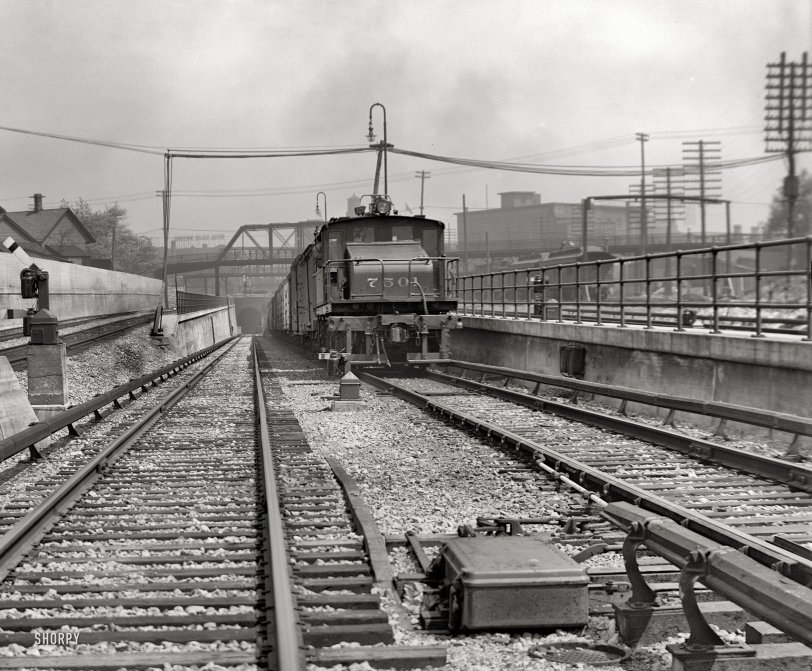


Framed or unframed, desk size to sofa size, printed by us in Arizona and Alabama since 2007. Explore now.
Shorpy is funded by you. Patreon contributors get an ad-free experience.
Learn more.

- Baldwin 62303
- Baldwin VO-1000
- Cold
- No expense spared
- Tough Guys
- Lost in Toyland
- And without gloves
- If I were a blindfolded time traveler
- Smoke Consumer Also Cooks
- Oh that stove!
- Possibly still there?
- What?!?
- $100 Reward
- Freeze Frame
- Texas Flyer wanted
- Just a Year Too Soon
- WWII -- Replacing men with women at the railroad crossing.
- Yes, Icing
- You kids drive me nuts!
- NOT An Easy Job
- I wonder
- Just add window boxes
- Icing Platform?
- Indiana Harbor Belt abides
- Freezing haze
- Corrections (for those who care)
- C&NW at Nelson
- Fallen Flags
- A dangerous job made worse
- Water Stop
Print Emporium
Electro-Motive: 1910

Circa 1910. "Electric engine, Detroit River tunnel." With a plug for Royal Salad Dressing. Dry plate glass negative, Detroit Publishing Company. View full size.
NYC/MCR 7501
7501 is a class R-1 electric locomotive 45206 built by Alco-General Electric in February 1910.
What is it Lassie? Oh, Timmy is in the tunnel!
Aerial view of the tunnel entrance, which is just beyond the fenced-in parking lot and down twenty feet or so.
Electric Railroad with Lanterns
Note the kerosene lanterns on the backs of the signals.
Shoving them through
Looks like the electric is performing the role of rear end helper, based on the position of the engineer, dwarf signal and flying flags on the pilot. He is coasting now, but will start to shove as the drag nears the bottom of the tunnel.
Subway steam
Despite the smoke problem steam engines were used in the London subway (Underground) system during the 19th century. Special vents were built at regular intervals with many disguised as houses. Some of these still exist.
Third rail shoe
There were sprung contact shoes mounted on the engine trucks. On the New York Central and its subsidiaries, the shoe contacted the bottom of the third rail, which was covered by wood on top to make it a little bit safer.
Most other rail lines and most of the subway and "El" trains use an over-running third rail -- the shoe contacts the top of the bare third rail. You do not want to fall on it!
Time machine malfunction
I would believe and not even question it if you had a date of 1940 on this one. Also, I guess the engine must be electric because there would be too much smoke in the tunnel with a coal burning steam engine. I would love to see how the engine connects with that third rail.
[Below, a setup similar to the one in our photo. - Dave]

Electromotive
Looks like a 100-ton General Electric loco, delivered in 1910 to Michigan Central. Operated at 600 volts DC off the shrouded third rail. Trains were standard gauge, with the third rail at one half gauge width outside.
























On Shorpy:
Today’s Top 5